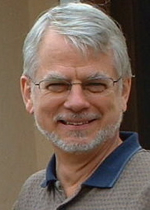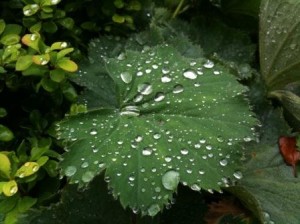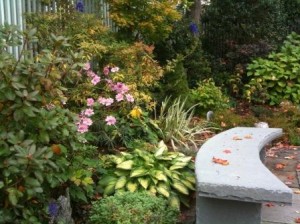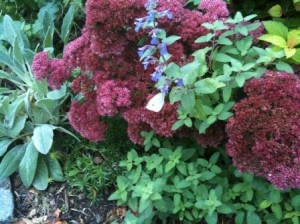Sunday
Dharma TeachingsStrong Medicine for Challenging Times
This is the second in a series of articles by senior Shambhala teachers invited to share their personal impressions of the Way of Shambhala curriculum. Thanks to Jim Northcote of the Kootenay Shambhala Centre for creating this series.
By Ben Hines
Through the Way of Shambhala, Sakyong Mipham Rinpoche is bringing stronger medicine, vajrayana wisdom medicine, to the many more quickly in this dark age. The elements prominent in the terma text of The Letter of the Black Ashe, which include the “dignity” energies of Tiger, Lion, Garuda and Dragon, now become part of the introductory classes in our Shambhala Centers. These add confidence and insight to the developing faith of the beginning shamatha meditator. If The Letter of the Black Ashe is an arrow, then it is an arrow touched with the “poison” of gentleness and confidence, and is meant for our hearts. The Dorje Dradul and Sakyong Mipham mean this arrow also for the heart of the present dark age where fear, anxiety and dread are so much of the air we breathe today and the loss of dignity is so common.
The “secret” of the Way of Shambhala, is still gentleness–the practice, study and contemplation of which is included in all the meditation weekends and their related classes. This gentleness is automatically toughness as any meditator discovers who persists with following the breath through all the emotional weather of sitting an hour, a weekend or a retreat.
This gentleness develops in two ways in the Shambhala context. First, it arises from the ground of basic goodness, which expresses itself all over the world in the created containers of loving kindness called Shambhala weekends. These containers usually have at least one flower arrangement, even in prisons and hospitals, as well as banners. Often pins are worn with gentle precision. There are the smiles of humans ready to drop opinions and prejudices for the sake of trusting further.
Then the practice of dialogue and the more extensive use of listening as a practice, lately introduced to shastris and senior teachers, transforms powerfully the teaching of Shambhala principles and human wisdom in the Way of Shambhala. The practice of dialogue is simple and arises from contemplation of a powerful question that has no “answer,” e.g. “What do you fear?” or “What do you trust?” This practice is transformational because the individuals involved, usually two, are required to listen themselves into a space beyond their own opinions and preconceptions and beyond discursive thinking, holding the deepest inmost longing and wisdom of the other with utmost gentle and precise care.
With a meek and confident teacher, dialogue in pairs and groups can allow the wisdom of the teachings to arise with more potency than might issue from a talking head giving short or long “brilliant” talks. In this way, dialogue pushes powerfully the creation of the sense of community experienced in the bonding and potential friendship of two strangers enlarging the space of their trust.
One effect of the Way of Shambhala dialogues is that we create moments and spaces: moments of nowness, the edgy thrill of meaning flowing in and through the other; and spaces―cradles of loving kindness―where it is easier for human beings to connect with their own basic goodness, their own wisdom beyond culture. In such moments and spaces the deepest human longings of our times spring forth: the desire to open out and trust further, the desire for community and the desire for meaning. It is a privilege to witness this!
On a bigger scale, such dialogue and listening produces two effects for a better society. First is the experience of wisdom beyond culture. Such thorough listening is a social tool for enlightened society. Imagine a citizenry, for example, some portion of which is trained in deep listening with anybody, with strangers, with other, with those of different language, dress and culture in this time of the proliferation of fears. This may be where the best possibilities of citizenship start. In a time when fears proliferate, strangers listening to strangers are not a predominant feature of our society. The second effect is tolerance.
There are three aspects unique to the Way of Shambhala as a path to bringing human beings to full maturity and to the arising of enlightened society. First, the boundary between secular and spiritual is dissolved within the scope of the life of the individual. All of one’s breaths are included in any setting in a 24-hour day, as well as all one’s thoughts and emotions, whether pure or defiled. Second, we treat fear in a distinctive way. Fear is included, not avoided, in daily experience and in our intention to become a fully mature, realized, confident human being. Third, the terma texts of Shambhala Buddhism contain wisdom that directly address at many levels the issues of society and our time. We are guided socially, culturally and in our individual lives by this wisdom. Finally, the purpose of the Way of Shambhala is creating community, communities of wisdom and trust, radiating friendship to society at large, embracing diversity.
“It is now less about guru than it is about society,” as Sakyong Mipham Rinpoche said to the shastris last summer. “Our teaching is not about us but what we can offer. The world is in a phase, looking for answers. We should teach not just Shambhala but social issues.”
Once in a receiving line in Portland, Sakyong Mipham Rinpoche told me he was building the kingdom brick-by-brick. More recently, with great intention and no coincidence, the bricks of the Way of Shambhala curriculum and the appointments of shastris came into being. He also opened further to the world the path to individual enlightenment and the social plan of the Scorpion Seal teachings.
So the Sakyong is making and laying bricks but it is not walls being built. In fact the walls of enlightened society are non-existent. Without walls, the view is immense.
With such a view, what else is there to do but relax more, feel our inner strength? I am sensing urgency in the Sakyong to open further, feel the fear, anxiety and dread of the times, and the preciousness of being alive and bound to others in this beautiful world. Then do something of use for another, do something communal. See what happens.
All homage to the Sakyongs!
_______________________
 Ben Hines has been inspired by teachers, practice and dharma for 30 years, as a student of Chogyam Trungpa Rinpoche and Sakyong Mipham Rinpoche. A resident of Seattle, he was recently empowered by Sakyong Mipham Rinpoche as a shastri (“teacher learned in the texts and commentaries”). He is married and has two daughters and two grandchildren.
Ben Hines has been inspired by teachers, practice and dharma for 30 years, as a student of Chogyam Trungpa Rinpoche and Sakyong Mipham Rinpoche. A resident of Seattle, he was recently empowered by Sakyong Mipham Rinpoche as a shastri (“teacher learned in the texts and commentaries”). He is married and has two daughters and two grandchildren.
Excerpted from: Kootenay Shambhala Blog
Read other articles in Senior Teachers of the Way of Shambhala series.



















